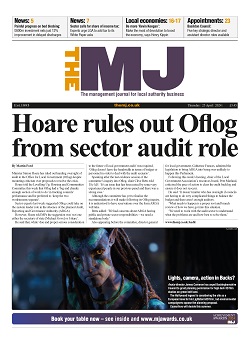Change is well under way at South Derbyshire DC, with the creation of a new Labour administration following last May’s elections, and the arrival a few days later of a new chief executive.
Justin Ives took over in the top corporate job following the retirement of the district’s longstanding chief executive Frank McArdle. His appointment was followed swiftly by that of Tracy Bingham as strategic director, corporate resources.
What lies ahead for a district that is determined to keep building on some key strengths. Green tech is a fundamental target industry and two prize employers in the patch – Toyota and JCB – are world-leading in terms of hydrogen technology. The formation of the East Midlands Combined County Authority (EMCCA) this spring – with the first election for the regional mayor taking place in May – also bodes well for economic growth.
As a result of the devolution plans, the East Midlands has also been invited to set up an Investment Zone to attract £160m of support over 10 years. And this comes after the creation of the East Midlands Freeport in 2021. Both the freeport and the Investment Zone will be firmly focused on green tech, so there will be real synergies there to benefit the district.
Speaking to The MJ at South Derbyshire’s council offices in Swadlincote, Ives says the council is ‘in a fantastic financial position – probably a better one than most’.
But he wonders if that could be a result of ‘not having enough people to do the day-to-day job’. Recruitment is a challenge, but one the council is addressing. ‘We need a workforce strategy, which is something our head of organisational development is working on. We’ve got a problem with recruitment in this organisation, and retention in certain parts. What I’m hearing from colleagues is we pay below the rate when you look at our neighbours, which is obviously an issue.
‘The other thing I hear quite a lot is that we’re under-resourced. We haven’t got the full-time equivalents that others have. Speaking to colleague chief executives that’s certainly looking to be the case.’
Creating structures in the council to give people promotion prospects will be crucial, he adds. ‘Currently the senior structure is very flat. There’s me, there’s two directors [Bingham and strategic director for service delivery Heidi McDougall], and 12 heads of service.’ The head of legal and democratic services and monitoring officer Ardip Sandhu ‘sits on my senior team as the monitoring officer and acts as a director in all but name’.
The new political leadership ‘have big plans, big ambitions’, Ives emphasises. There are significant ambitions for regenerating Swadlincote town centre. These include a new leisure facility and a smaller more fit for purpose civic office to replace the existing tired buildings, on a new site. This will free up a town centre site for development.
Bingham, a columnist for The MJ, adds: ‘We’ll achieve better income from our management fee relationship with our leisure provider if they are in newer, more modern facilities that they can use to bring in more income.’
One priority is building more council homes. That brings its own set of challenges. McDougall says: ‘We have a few small sites we could potentially develop, but we haven’t got large scale pieces of land where you could put a decent new housing estate. In terms of priorities we have some investment to do in our existing stock, because we haven’t invested for quite some time.’
The population of the area has grown 13% between the last two censuses and the district has the highest growth rate in England since 2011 in council tax base. Ives describes this as a ‘massive opportunity’.
But what risks lie ahead? ‘The risks for South Derbyshire in its broadest sense would be failure at a local level around other Derbyshire authorities going bankrupt, because unfortunately, for this Government and previous Governments, local government reorganisation is seen as the panacea for all our problems. It just isn’t.’
He continues: ‘If for example Derbyshire CC said “we’re bankrupt” I’ve got no doubt commissioners would be in within three years and there would be unitary councils in place in Derbyshire. Would this be the best solution for residents? I don’t think it would. I think that’s a real risk because if we look locally, there’s a couple of districts that are really struggling to balance their books for next year. The county council is struggling to balance its books for next year. The city [Derby] is struggling to balance the books for next year.’
Bingham underlines the main concern is not council finances. ‘I’m five months in [to her new role] and we delivered our draft budget last week. We’ve reduced the budget gap that we’ve got this year of £3.2m. The gap next year is £600,000.’
A huge amount of work has gone in to closing that budget gap, she adds. ‘But we are still investing in services significantly. I think for the new leadership team to have done that so early on is a real positive.’
They are convinced about the prospects for a flourishing future, she concludes: ‘One of the things a colleague said to me when I came for interview here was that South Derbyshire is a sleeping giant – and I think we’re waking that sleeping giant up.’



